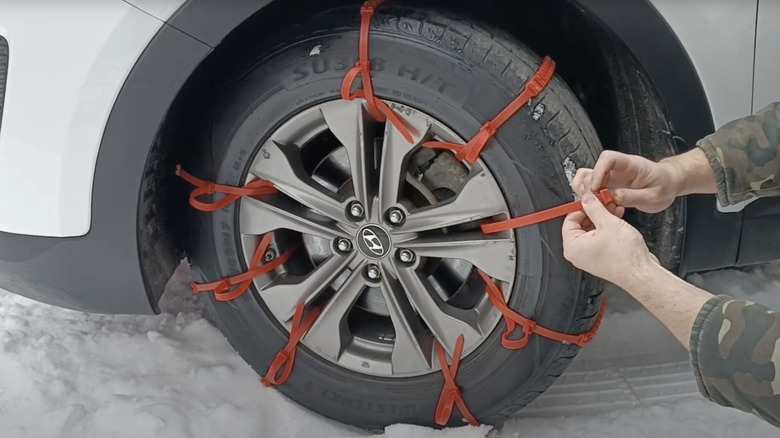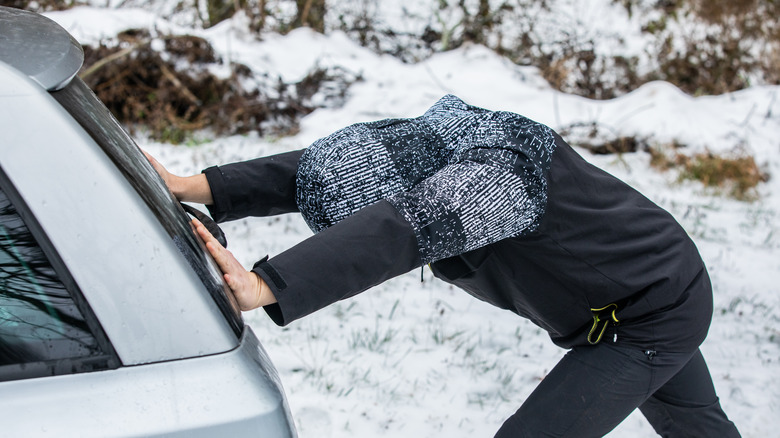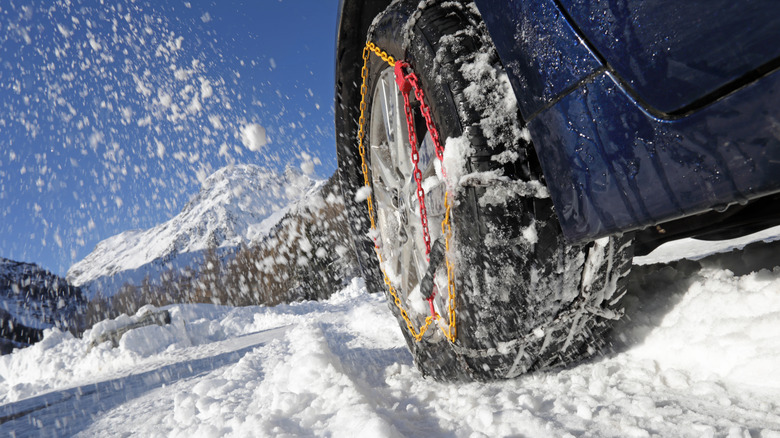Why Do People Put Zip Ties On Tires?
Driving in the winter presents a set of challenges that can sometimes test even the most experienced drivers. Besides the usual winter driving tips to keep in mind, one should also be well-equipped with all of the necessary winter emergency gear, including shovels, tire chains, jumper cables, and even blankets. Alongside these rather traditional winter kit additions, some drivers also carry zip ties, but what exactly are these, and why are people putting zip ties on tires?
It's important to note that these aren't your typical toolbox plastic zip ties, but rather emergency snow chain substitutes, designed to get you unstuck from snow, ice, and mud. The idea is that the raised tooth-like plastic protrusions help a tire grip slippery surfaces and allow you to get out of tricky situations without needing someone else to pull you free. Although effective at getting you out of a pinch, these are one-time solutions that aren't designed for extended use.
How zip ties on tires work?
Made of plastic, these traction zip ties are tightly looped around and through the rim to create a grippy surface between the tire and the road. The idea is actually fairly similar to what tire chains do, but these do have their intricacies. For starters, installing these zip ties is not easy since it requires threading them through the rim and around the entire tire. It also takes quite a bit of time to do so, which is not ideal in cold winter conditions. It's also worth noting that these are made of plastic and lack the necessary durability and consistent utility one associates with traditional tire chains.
Therefore, in states like Washington, the law requires drivers to use either tire chains or 'approved alternative traction devices' during wintertime. Approved devices are listed by the Washington State Patrol and include various potential solutions, but plastic zip ties are not one of them. This means that they don't qualify when tire chains are legally required and thus can get you fined if you solely rely on them. Ultimately, since these are intended as a one-time solution, they are not true tire chain alternatives.
Best tire chain alternatives
There are many other tire chain alternatives to help get your car through snowy and icy conditions that work better than zip ties. For example, using snow socks is easy and similar to tire chains without the installation hassle, while anti-skid snow straps are also able to get you unstuck in a pinch. Automatic tire chains are more expensive and typically used by public services, but can provide traction similar to tire chains without needing to install them with every use.
If your region encounters lots of snow and ice throughout the entire winter, using studded tires is also a viable option, especially for unplowed roads. Some people also carry tire traction mats or recovery boards to place under the tires for added traction without needing to install anything on the tires. Since there are many solutions to this problem, it's important to value your options according to your driving needs and wants, but keep in mind that relying on zip ties is not one of them.


